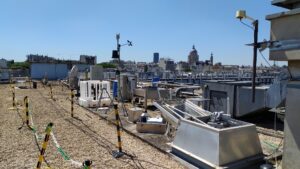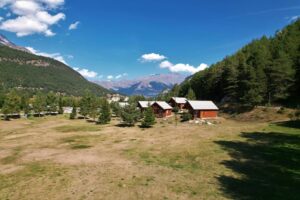Southern Ocean diatoms benefit from nutrients provided by desert dust and volcanic ash
A phytoplankton response triggered by a representative deposition event of natural aerosols in the Indian sector of the Southern Ocean.
An experimental study focusing on marine biogeochemistry has been carried out as part of the OISO program (French Océan Indien Service d’Observations) during an oceanographic campaign in January-February 2019 in the Indian sector of the Southern Ocean aboard the R/V Marion Dufresne.
Incubations (Figure 1) show that a representative deposition of natural aerosols triggers a phytoplankton response in different regions of the Southern Ocean, while modifying the structure of the planktonic community to the benefit of diatoms. This study, conducted mainly by researchers from LOCEAN-IPSL and LISA-IPSL, has just been published in open access in the journal Limnology and Oceanography.
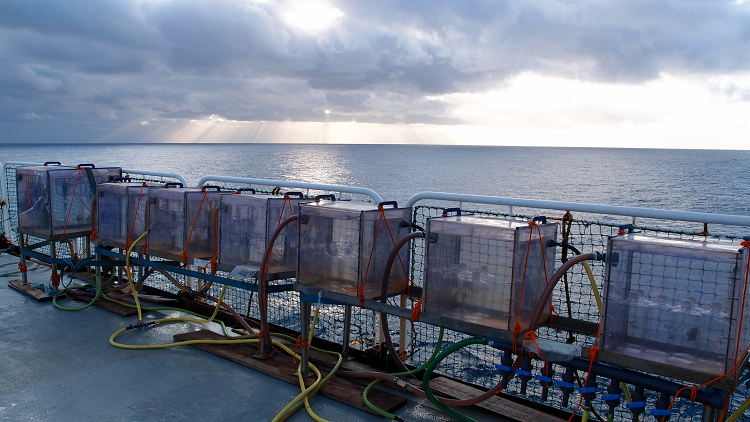
Figure 1. Photograph of the incubators on board the R/V Marion Dufresne, equipped with light filters and supplied by surface seawater to maintain representative radiance and temperature of the surface ocean.
Within the South Indian and Southern Oceans, contrasting concentrations of macro- and micronutrients induce different nutrient limitations for phytoplankton. microalgae communities are thus locally limited by different nutrients, which is reflected in a variable biomass (expressed as Chlorophyll-a concentration, Figure 2). Nutrients can be supplied to the sea surface via deeper waters during winter mixing, as well as episodically via ocean interfaces such as aerosols. Only limited amounts of atmospheric dust reach currently the remote areas of the Southern Ocean, but aerosol deposition nevertheless constitutes one of the major sources of new nutrients during the stratified period of the Austral summer. Moreover, considerably larger depositions have been recorded in this area during glacial times and/or volcanic eruption events.
After deposition on the sea surface, the desert dust and volcanic ash particles release nutrients such as iron and silicon to the seawater, which might temporally boost algal development. To assess this response within distinct biogeochemical areas, we conducted microcosm experiments at different stations. A dry or wet deposition of dust from Patagonia or ash from the Icelandic volcano Eyjafjallajökull or dissolved nutrients (Si, Fe, N and/or P) was added to clean surface seawater incubations.
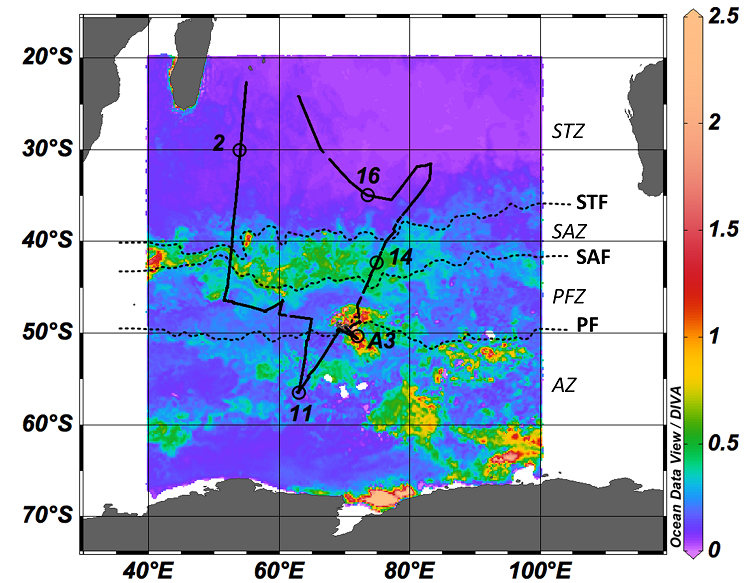
Figure 2. OISO-29 cruise transect showing the locations of the five stations (LNLC-2, HNLC-11, Kerguelen-A3, HN-LSi-LC-14 and LNLC-16) where the bioassay experiments were performed, and satellite-derived chlorophyll-a concentration (µg.L-1) averaged over January 2019 (MODIS). The position of major fronts was determined from satellite-derived temperature data (January 2019, MODIS): STF: subtropical front (18 °C), SAF: Subantarctic front (13 °C) and PF: polar front (5 °C). Fronts delimit the STZ: subtropical zone, SAZ: Subantarctic zone, PFZ: polar front zone and AZ: Antarctic zone.
In this study, we show that a realistic deposition of desert or volcanic aerosols is an important source of nutrients to the ocean surface, triggering a significant increase in the photosynthetic activity of phytoplankton (CO2 fixation) in different regions of the Indian Southern Ocean (Figure 3). Both aerosol types mitigated iron deficiency occurring in the Southern Ocean during the Austral summer and caused a 24 to 110 % increase in primary production, depending on the station. The release of dissolved silica potentially also contributed to this response, although to a lesser extent. Some algae groups such as diatoms benefit more from the new nutrients (40 to 100 % of the biomass increase in the responding stations), thereby modifying the structure of the planktonic community. On the other hand, the same deposition had no effect in the subtropical part of the South Indian Ocean, as the local nitrogen limitation was not relieved by the aerosols.
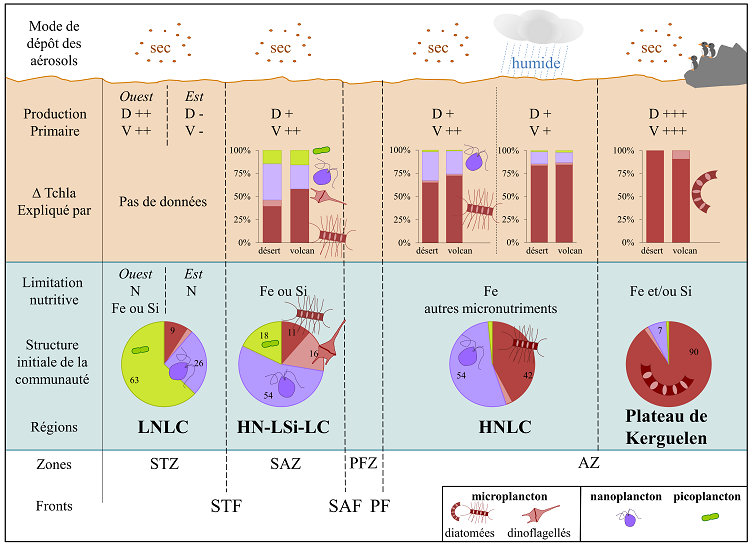
Figure 3. Schematic representation of the biological response of phytoplankton communities after dry or wet dust (D) or ash (A) deposition to the sea sur- face within different biogeochemical regions of the South Indian Ocean and Southern Ocean. The top part of the figure (orange box) shows the phytoplankton response to aerosol deposition (PP and ΔTchla), while the bottom part (blue box) represents the initial conditions prior to deposition (nutrient limitation and phytoplankton structure). Primary production is expressed in relative change (%), as follows: +++ above 100%; ++ above 50%; + below 50%; ̶ no significant change compared to control. ΔTchla shows the contribution (%) of different phytoplankton classes explaining the global increase in Tchla. The community composition (initial and final) is based on the pigment signature, with red: microplankton (dark: diatoms and light: dinoflagellates), purple: nanoplankton, and green: picoplankton. The graphic concerns solely the surface layer and response after 48 h, regardless of depth and particle sinking. Zones and fronts (from North to South): Subtropical Zone and Front (STZ and STF); Subantarctic Zone and Front (SAZ and SAF); Polar Front Zone and Polar Front (PFZ and PF); and Antarctic Zone (AZ).
More
Remerciements
This study has been financed by the French Research Program LEFE (Les Enveloppes Fluides et l’Environnement) through BISOU and ITALIANO projects and by the DADDY project supported by IPSL. The authors thank INSU and the French oceanographic fleet (‘Flotte océanographique française’) for financial and logistic support to the OISO program and the VT163/OISO-29 oceanographic campaign (https://doi.org/10.17600/18000972). The authors thank Karine Leblanc (MIO Marseille) for the loan of the incubators.
Reference
Geisen, Ridame, Journet, Delmelle, Marie, Lo Monaco, Metzl, Ammar, Kombo, Cardinal (2022). Phytoplanktonic Response to simulated Volcanic and Desert Dust Deposition Events in the South Indian and Southern Oceans. Limnol. Oceanogr. doi : 10.1002/lno.12100
Contacts




